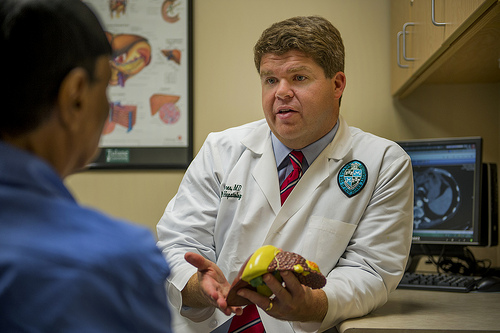
Liver inflammation in hepatitis
Inflammation of the liver is the characteristic feature of hepatitis. It can be seen in both alcoholic hepatitis and viral hepatitis. Prolonged inflammation of the liver can lead to its fibrosis, a condition better known as liver cirrhosis. There are different types of viruses responsible for viral hepatitis, most common of which are A, B, C, D and E. Hepatitis A, B and C are usually seen in America. Hepatitis A is caused by eating or drinking contaminated food or water. The symptoms resemble that of a stomach infection. The condition resolves on its own in 1 to 3 months. Hepatitis B and C are caused by contaminated blood and body fluids like semen and vaginal fluid. They are responsible for sudden illness which may progress to liver cirrhosis.
- Important notification about information and brand names used in this slideshow!
- Photo courtesy of Tulane Public Relations by Flickr : www.flickr.com/photos/tulanesally/9102000626/
- www.rxlist.com/hepatitis_what_puts_you_at_risk_slideshow_pictures/article.htm
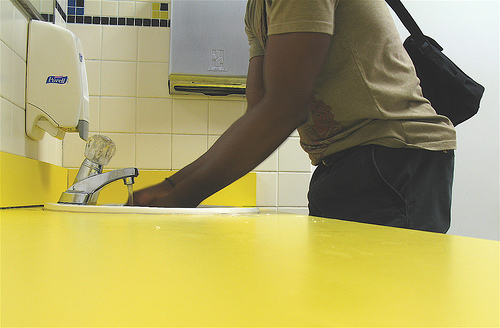
Maintain your hygiene to protect yourself from hepatitis
It is important to maintain your personal hygiene to remain protected against hepatitis infection. Hepatitis A virus is transmitted through what is known as the ‘feco-oral route.’ It means that a person gets infected when he eats something that has been contaminated by the feces of an infected person. Consuming food contaminated by sewage and drinking contaminated water can also lead to hepatitis A infection. Hepatitis B and C spread through contaminated blood and body fluids. Transfusion of contaminated blood, sharing contaminated needles (often seen in drug addicts), having unprotected natural or unnatural sex with an infected person are some of the common routes through which hepatitis B and C infection spreads.
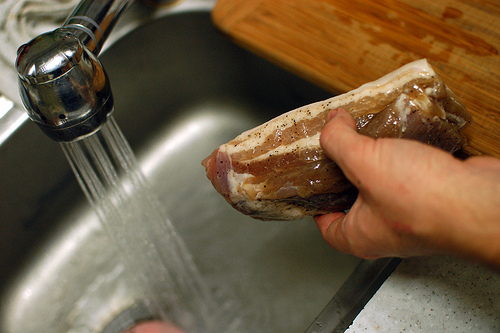
It is important to wash fruits and vegetables
Hepatitis A outbreaks are usually a result of eating food contaminated by the feces of an infected person. Water that comes in contact with infected feces also gets contaminated. You can never be sure of the purity of water that has been used for irrigation. Therefore, it is extremely important that you wash the fruits and vegetables thoroughly before using them. It is even better if you peel them off yourself before consuming. Similarly, you should be careful about consuming milk, cheese, ice-creams and other dairy products. Make sure that the milk used in them is pasteurized. Do not drink untreated water or consume ice cubes made from such water.
- Important notification about information and brand names used in this slideshow!
- Photo courtesy of Seoulful Adventures by Flickr : www.flickr.com/photos/seoulfuladventures/4077959130/
- www.patient.co.uk/health/hepatitis-a-immunisation

Do not consumed uncooked oysters
Uncooked oysters may again be contaminated with water which has come in contact with a person infected with hepatitis A virus. Uncooked oysters, mussels and clam that have been harvested in polluted water can all be a potential source of hepatitis A infection. So, next time you decide to eat a shellfish or an oyster, cook it properly before consuming it. Keep this in mind when you head towards a raw bar as well. Apart from the danger of spreading hepatitis A virus, uncooked oysters have also been blamed for the spread of Vibrio vulnificus, a type of water borne bacteria, which may lead to severe nausea and vomiting, abdominal cramps, diarrhea, fever and skin lesions.
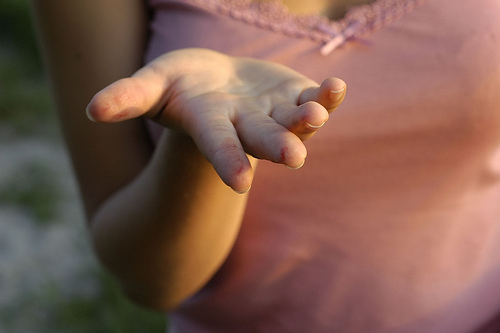
Open wounds may be a source of Hepatitis infection
Open wounds can also be a source of infection of hepatitis B and C virus. The virus is present in the serum oozing from such wounds and can be transmitted to any person coming in contact with it. However, the entry of virus into the handler’s body is facilitated if he also has some open wound in the area which comes in contact with the wound on the carrier’s body. It is then that the virus gets a direct entry into the handler’s body. To prevent getting infected from an open wound in the carrier’s body, it is necessary for the person taking care of the wound to wear gloves while attending to it. These gloves should ideally be disposable and should be discarded immediately after use. Otherwise, they should be sterilized as soon as dressing of the wound has been done.
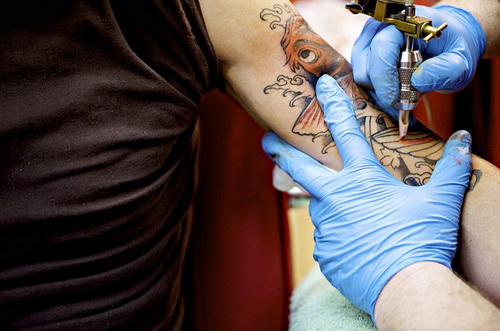
Risks of tattooing
Tattooing is a process that has been becoming steadily popular among people around the world. During tattooing, one or more needles are used in tandem to pierce the skin at various points. Every time the needle pierces the skin, it releases tiny droplets of indelible ink to make a design. Normally the part of the skin to be tattooed is not anaesthetized prior to the procedure. Though the process is usually over within a few hours, there is minor trauma to the skin surface every time the skin pierces it. This may lead to a small amount of bleeding. If a person is a carrier of hepatitis B or C virus, the needles get contaminated. If the same set of needles is used on another person without proper sterilization, the virus gets transmitted to the other person. Ensure that the tattoo parlor that you go to has the necessary license. See that he sterilizes his tattooing machine and uses a new set of needles and tubes before he commences the procedure on you.
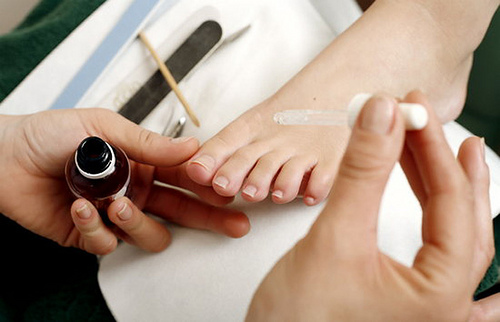
Risk of hepatitis infection during pedicure and manicure
According to a report presented in the annual scientific meeting of the American College of Gastroenterology, hepatitis B and C viruses can be transmitted through a pedicure, manicure or a haircut. This can mainly be attributed to the improper cleansing and disinfection of non-single use items in between uses. The instruments in question include nail files, nail brushes, razors, scissors, clippers, foot basins and finger bowls. Scientists tell us that hepatitis C virus remains alive externally at room temperatures for a duration extending from 16 hours to 4 days. Similarly, the hepatitis B virus can survive outside for as long as seven days. Both these viruses can enter your body and infect you even through a minor nick or scrape. Remember that the blue liquid in which the parlor persons dip their instruments to supposedly disinfect them is not strong enough to kill the hepatitis virus.
- Important notification about information and brand names used in this slideshow!
- Photo courtesy of FoundryParkInn by Flickr : www.flickr.com/photos/foundryparkinn/3763643398/
- www.bioplusrx.com/?p=541

Risk of hepatitis through sexual contact
Hepatitis B is usually transmitted through sexual contact. In fact, compared to HIV, a person is 50 to 100 times more likely to procure hepatitis through sexual contact. As hepatitis B virus is present in all body fluids including semen, vaginal fluid and saliva, it can be transmitted through sex (both natural and unnatural) and deep kissing. Hepatitis C virus is also transmitted through sex. People who are sexually promiscuous are more likely to get the virus compared to people who are in a monogamous relationship even if it is with a hepatitis C infected person. The virus also gets transmitted through infected blood and may get transmitted on coming in contact with genital warts or menstrual blood.
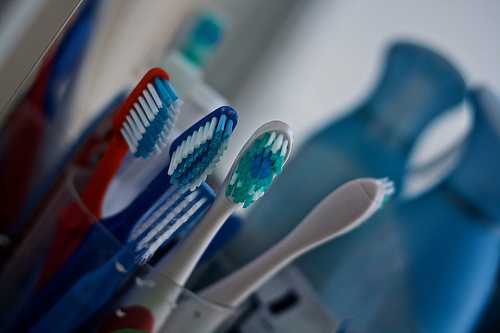
Sharing personal items helps in transmission of hepatitis virus
Both hepatitis B and C can be transmitted from an infected person to a healthy person by sharing items of personal use like razors, toothbrushes, needles and nail clippers. This is because both these viruses are resilient in nature and can survive at room temperatures for days together. So, if an infected person has used these items, they are likely to be harboring the virus. Any healthy person sharing these contaminated items can easily get infected if he has an open wound. Personal items like razors and nail clippers may even be carrying minute amounts of infected blood if the person using them is a carrier and has accidently cut himself. If a person sharing these items also has an open wound, he is likely to get infected.
- Important notification about information and brand names used in this slideshow!
- Photo courtesy of Anderson Mancini by Flickr : www.flickr.com/photos/ektogamat/2952129288/
- www.phac-aspc.gc.ca/hep/
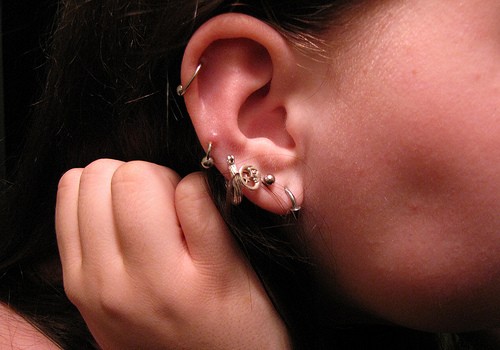
Piercings risks
Though uncommon in developed countries, piercing carries a risk of hepatitis B, C and HIV infection in developing and underdeveloped countries. This is especially true when the hygiene standards are poor and dirty needles are often used. Hepatitis virus is a resilient virus that can live on the surface of dirty instruments for many months at normal room temperatures. If a needle used by an infected person is not thoroughly disinfected, the virus continues to survive on it. When this needle is used by another person, the virus is transmitted to him. Therefore, ensure that a fresh sterile needle is used when you go for piercing.

Interferon and hepatitis
What's Inside : - Five patients who were on interferon for four conditions share their real-life experiences - Interferon facts your doctor didn’t share - A bonus interferon fact sheet — all important data on a single page - All the research — already done for you! - Possible alternative to interferon for your condition - Updates and news about interferon in your inbox - Become a part of the SteadyHealth community to talk about interferon and the conditions it treats http://www.steadyhealth.com/interferon-side-effects/
- Important notification about information and brand names used in this slideshow!
- Slide by steadyhealth.com








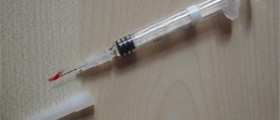







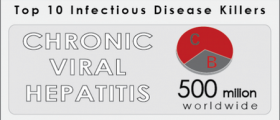





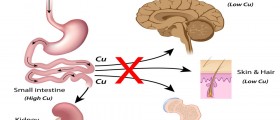
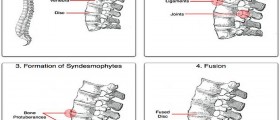



Your thoughts on this
Loading...